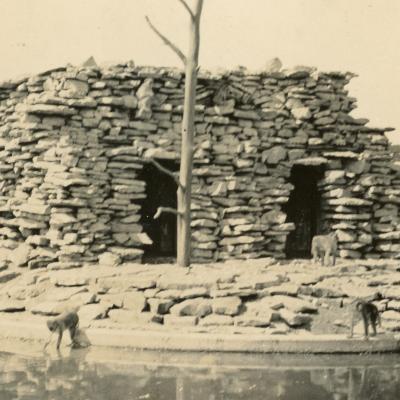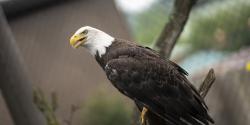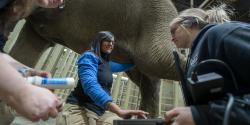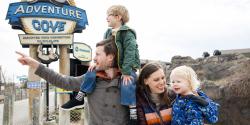On September 17, 2022, the Columbus Zoo and Aquarium is recognizing 95 years of operation! That also means that in just five years, the Zoo will celebrate its centennial—that means 100 hundred years of a rich history full of many firsts, memorable moments, and innovation.
In fact, here’s some fun trivia that you may not know about the Columbus Zoo and Aquarium:
- Back in 1939, The Zoo had a hippo named Pete. Pete was the oldest Zoo animal at the time of his death on March 30, 1982.
- The Columbus Zoo is the youngest zoo in the Buckeye State. Zoos in Cincinnati, Cleveland, and Toledo opened in 1875, 1882, and 1900 respectively.
- In 1905, there was the Columbus Zoological Garden in Beechwold in Clintonville. It lasted approximately four months.
- A small zoo was established at Olentangy River Park (an amusement park) in 1910 that housed monkeys, bears, and elephants.
So, what went into the start of the Columbus Zoo?
In the roaring 1920s, Columbus was a boomtown with a population of 237,000. The growing population required amenities like fresh water and flood protection. In 1922, the City of Columbus purchased land in Delaware County along the Scioto River for the development of the O’Shaughnessy Reservoir, a dam, and for the creation Riverside Park. Then Columbus Mayor James J. Thomas, Columbus Evening Dispatch publisher Harry “H.P.” Wolfe, and Clarence Hoover (working on the dam project) took a trip to St. Louis to learn about the city’s water system. While in St. Louis, they visited the area zoo and watched children laughing while observing the monkeys. Wolfe commented to Thomas, “Jim, Columbus should have something like this.”
And so, the seed was planted on the future of the Columbus Zoo!
In the fall of 1926, Wolfe purchased six reindeer and had them imported from Alaska to be housed at Franklin Park for the Columbus Christmas celebration. Because of the popularity of the reindeer, Mayor Thomas, recalling the trip to the St. Louis Zoo, made a recommendation to the Columbus City Council for a zoo. The council agreed, and the city allocated the Riverside Park land (21.5 acres) for the zoo. What was Riverside Park is now the west side of the present Columbus Zoo.
Thrilled with the city’s decision, Wolfe donated the reindeer to the city with the condition that they be viewable for the public’s enjoyment. The city agreed to furnish permanent housing at Riverside Park as well as animal care, food, and veterinary services. The Dispatch paid for and built a six-acre corral and shelter.
On September 17, 1927, The Columbus Dispatch announced, “The city of Columbus came into possession of six full-blooded Alaskan reindeer Saturday afternoon as a gift of the Columbus Dispatch. They were placed in an enclosure in the city park near O’Shaughnessy dam where they could be viewed by the public.”
Although no one knows the exact date that the reindeer were viewable, the date of this announcement is probably as close as we will get to knowing the Zoo’s birthday. We also know that by October 4, 1927, rhesus macaques (monkeys), including Pedro Miguel—a monkey owned by the Mayor—were the newest residents of the Columbus Zoo. Monkey Island was built to accommodate them that year.
Today, the Columbus Zoo welcomes more than 2.2 million guests annually, provides expert care to more than 10,000 animals representing 600 species, and supports more than 75 conservation projects in over 20 countries around the world.
One thing is for certain—there’s much to celebrate thanks to the support of our community and our dedicated staff and volunteers, who continue to give their time and talents to help make a difference for the future of wildlife. Our Zoo has come a long way in 95 years, and we look forward to celebrating our centennial in 2027!











